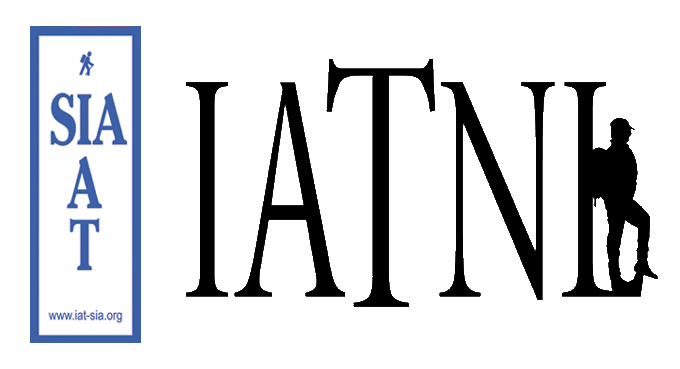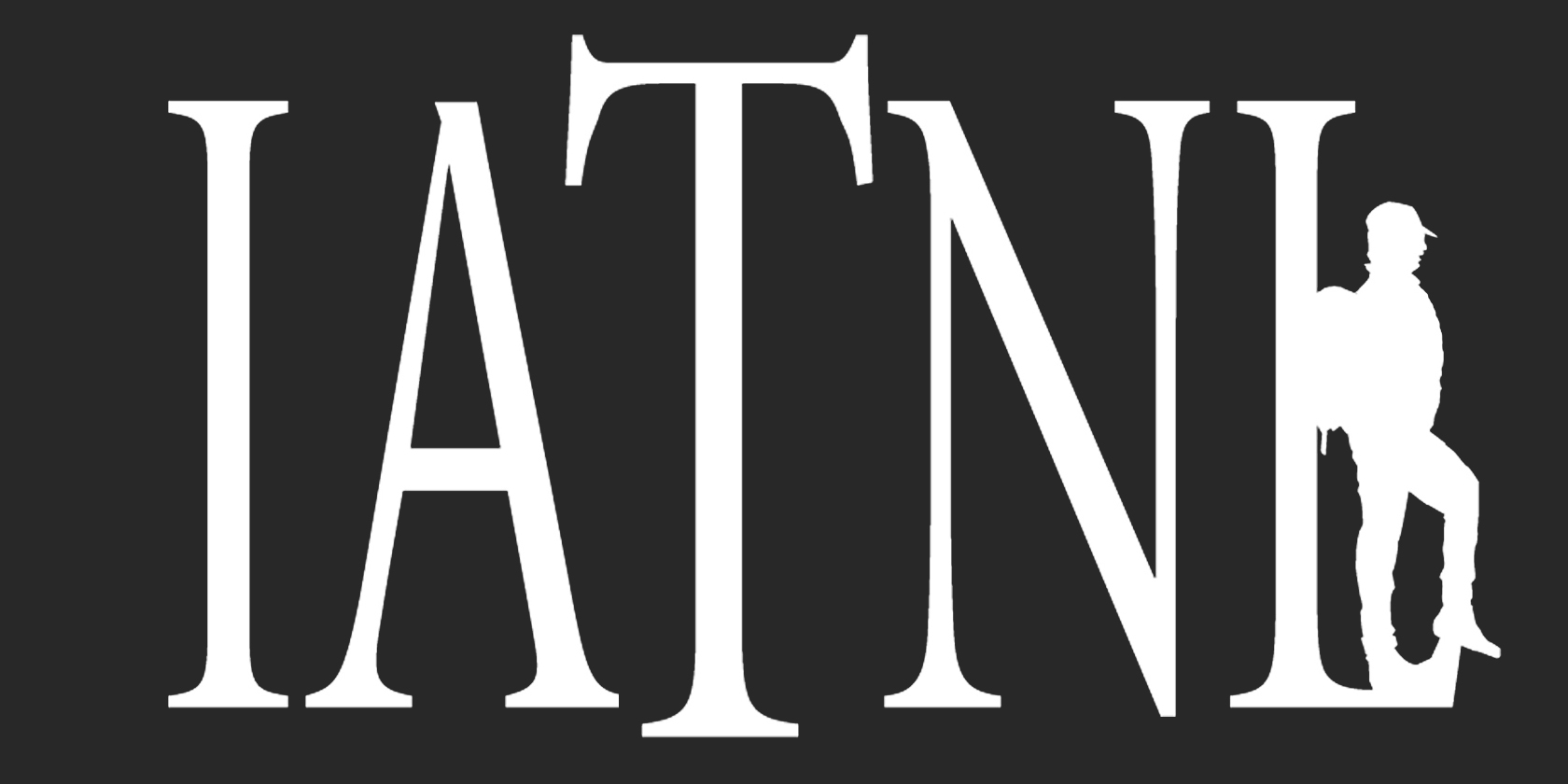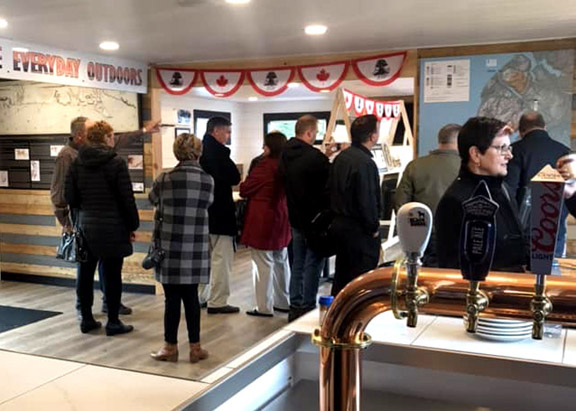On the beautiful morning of August 17, IAT/IATNL Chairperson Paul Wylezol and IATNL Finance Director Kevin Noseworthy set off in a dory from Cox’s Cove, Bay of Islands with Darren Park of Four Seasons Tours in search of Middle Arm geosites for the planned Cabox Global Geopark.

IATNL’s Kevin Noseworthy (left) and Four Seasons Tours’ Darren Park
The Geopark will feature 3 basic zones of the Humber Arm Allochthon: the Ancient Continental Shelf of North America, the Transported Continental Margin of North America, and the Bay of Islands Complex Ophiolite Massifs.
 Bay of Islands detail from the Humber Arm Allochthon. (Geological Survey of Canada. Click to enlarge)
Bay of Islands detail from the Humber Arm Allochthon. (Geological Survey of Canada. Click to enlarge)
The tour’s first stop was Middle Arm Point between Humber Arm and Middle Arm. Its exposed and weather-beaten headland is a good example of the Zone 2 Cook’s Brook Formation.

There you can see layers of sedimentary limestone and sandstone

folded in unique patterns when tectonic collisions closed the Iapetus Ocean and formed the Appalachian Mountains more than 250 million years ago.

From Middle Arm Point, the trio turned back and headed east into Goose Arm and the rising sun.

Goose Arm is one of two forks of Middle Arm that extends northeast from Penguin Head. It is L shaped and approximately 13 kilometers (8 miles) in length. The other – Penguin Arm – extends approximately 7 kilometers (4.5 miles).
With the exception of Cox’s Cove, all of the communities in Middle Arm were resettled by the mid 1960’s, when the provincial government introduced a plan to centralize government services in fewer and larger towns. Today, former settlements can be identified by small clusters of cottages that dot the shoreline in the most favorable locations.

Resettled Community of Manuels in Goose Arm
But coasting along shore, it isn’t long before visitors discover that the most populous residents above the water line are bald eagles, which sit on their perches waiting for their next meal to swim by.

Still higher above the cottage community of Manuels looms Raglan Head, a 1,000 ft (305 m) high sandstone mountain from the same formation as lower Humber Gorge. It is a good example of Geopark Zone 1, North America’s ancient continental shelf.

Its many layers of sedimentation and long scree fields of tumbling sand and boulders portray an old age not easily illustrated by rock and stone.

At Raglan Head, Goose Arm narrows before widening out into the calm waters of the inner arm, quiet now but once abuzz with activity when logging operations provided pulp wood to the paper mill at Corner Brook.

Unlike most of Western Newfoundland, the coastline here is temperate and protected enough for healthy forests to extend to the high water mark. They are more reminiscent of the sheltered bays and inlets of Central Newfoundland than the rugged and exposed shores of the west coast.

Departing Goose Arm along its northern shore, boaters pass Cannon Point, the exposed lower face of Penguin Head once used as target practise by European ships visiting the bay. This geosite links the bay’s unique natural heritage to its diverse cultural heritage, from native American to French and English.

Crossing Penguin Arm to Woman Point is a return to the Transported Coastal Margin of Geosite Zone 2.

IAT Chairperson Paul Wylezol crossing Penguin Arm
The entire north side of Middle and Penguin Arms are part of the Cook’s Brook formation of mostly layered and deformed limestone.

Around the point is Woman Cove, where Four Seasons Tours owns one of a half dozen cabins used as secluded getaways and fishing camps.

After Darren boiled a pot of muscles for lunch, the trio headed back to Cox’s Cove,

but not without first jigging a half dozen mackerel

and watching a resident bald eagle snatch his own lunch!

Returning across the arm to Cox’s Cove provides a spectacular view along Middle Arm Head. It is a familiar sight to Paul and Kevin, as they pass this exposed section of Cook’s Brook Formation whenever they visit the IATNL Base Camp at Back Cove in North Arm.

Back on shore, Darren made short work filleting the morning’s catch of mackerel before setting off on another tour.

Like the lucky gulls who snatched a piece of entrails, many thanks to Darren and Four Seasons Tours for their support of Cabox Aspiring Geopark and providing a great Geosite Adventure on Middle Arm!





